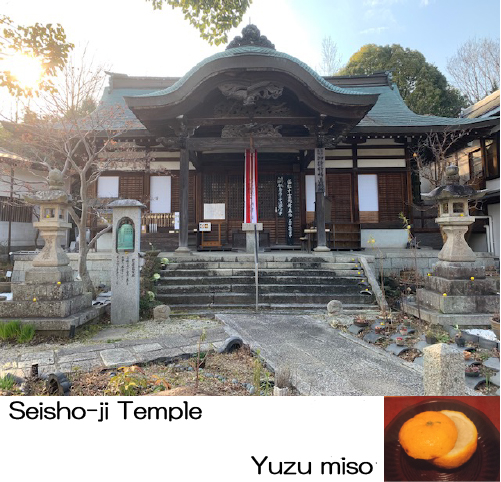Yotsukunugi Village
(Yotsurukusunoki Village・Yotsukunugi Village)
The legend of Kōbo Daishi and Seisho-ji Temple

This is about a happening that occur after Kukai returned from studying abroad, when he was staying at the Makio-dera Temple. He was told there was an epidemic disease spreading in this area. So, he first built an altar and prayed, then he indicated the countermeasures for the epidemy, and consequently the epidemy was calmed down. Afterwards, a camphor tree sprouted up in the place where the altar was placed for praying and grew up to spread four boughs in the four directions, becoming a holy tree symbol of faith. However, this camphor died in the middle of the Edo Period, and in the year 7 of Kyōho period (1722) a statue of Kōbo Daishi was made from this holy tree, becoming the principal object for worship, building the Seishō-ji Temple. It is also known as “Yotsu no Odaishi-san” and in the winter solstice “Yuzu miso” (sauce made with a citrus called yuzu and miso) is distributed to the people coming to worship. Also, in the last part of the Edo Period, a sacred ground for the pilgrimage of Shikoku 88 Sacred Sites was set up in the hill at the back, and many people came to worship. Seishō-ji Temple is located a few steps west of where the West Kōya Kaido and the Middle Kōya Kaido come together.